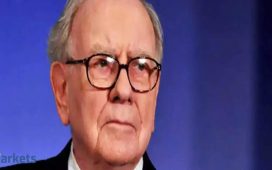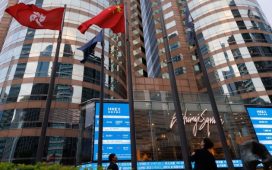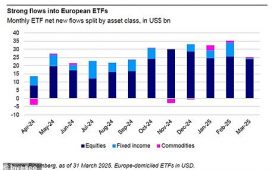
US treasury yields had hit their highest in over 15 years in the run-up to the Federal Open Market Committee’s Oct 30-Nov 1 meeting, with the 10-year rising past 5% on Oct 23. The 30-year had hit 5.18%.
The 10-year yield was below 4% in August, and the surge in the next three months had surprised many and had, in a way, left the FOMC decision moot.
Treasury yields have been propelled higher in recent weeks, not only by expectations that the Federal Reserve will keep its policy rate elevated for longer than expected but also by growth in the supply of bonds and waning demand from central banks.
What has been particularly hurting the market is the Fed’s quantitative tightening, which has resulted in the central bank not replenishing bonds in its portfolio that have matured.
The market had caught up with the Fed’s rate actions (an increase of 500 basis points in 19 months) and balance sheet reduction.
Not just the markets, even several Fed officials had alluded to the market’s view that the bond market was doing the central bank’s job.Federal Reserve Bank of Dallas President Lorie Logan said earlier last month that the surge in treasury yields may mean less need for the US central bank to raise its benchmark interest rate again.
“Higher term premiums result in higher term interest rates for the same setting of the Fed funds rate, all else equal,” Logan had said.
“Thus, if term premiums rise, they could do some of the work of cooling the economy for us, leaving less need for additional monetary policy tightening.”
San Francisco Fed President Mary Daly has said that bond yields have tightened, meaning financial conditions have tightened. “If that’s tight, maybe the Fed doesn’t need to do as much. That’s why I said, depending on whether it unravels or whether the momentum in the economy changes, that could be equivalent to another rate hike.”
On Nov 1, the Fed left interest rate unchanged and added some phrases to its statement suggesting the higher yields may have done the trick.
The Fed said tighter financial and credit conditions will likely weigh on the economy. It added “financial” to this aspect of the statement, which suggests the Fed believes firm treasury yields may render another rate hike unnecessary.
But did high yields negate the need for rate hikes?
No Substitute
In context related to his own country, Bank of Canada Governor Tiff Macklem said high bond yields are not a substitute for central banking action.
Macklem said higher long-term bond yields reflect expectations for future central bank policy. “They’re not a substitute for doing what needs to be done (now) to get inflation to come back to our target,” he had said.
The same logic applies to the Fed and other central banks.
It could be dangerous for the central banks to be mainly pushed by the market’s pricing of bonds to set policy – either to raise rates or to cut them.
The factors driving the bond market are simply the bloated budget deficit of the US government and its plan to intervene in the West Asia conflict if needed. Heavy borrowing by governments often boosts the economy and drives up inflation pressures.
Often, movement in bond yields could be temporary. A soft reading of inflation or employment numbers could bring the yields closer to 4.50%.
This is what has happened. Yields have fallen sharply since the Fed meeting.
The 10-year yield has fallen to 4.50%.
The reasons are twofold:
The Fed indicated it might be done with rate hikes at its latest FOMC meeting.
The US Treasury increased the size of longer-term debt auctions by a smaller amount than many had expected. The treasury came to the market’s aid.
The bond market has started dismissing and semblance of central banking hawkishness by expecting the Fed to pivot to rate cuts in the next 6-8 months.
It is purely sentimental reasons that yields have fallen by around 50 basis points in just over a week.
The term premium or high bond yields is distinct from economic developments, and it would be best for the markets to react to the Fed instead of the Fed reacting to the markets.
High bond yields may have been a pretext for holding out on rate hikes, and they may not necessarily be driving the call. Fed was probably just waiting for more data to consider further tightening.
Fed Chair Jerome Powell told the media after the FOMC meeting that the persistence of high yields could work for the monetary policy but there are two essential conditions.
The first is that the tighter conditions would need to be persistent. If things are fluctuating back and forth, that’s not what the Fed is looking for. “With financial conditions, we’re looking for persistent changes that are material,” he said.
The second is that the rise in longer-term rates should not be a mere reflection of expected policy moves from the Fed. “If we didn’t follow through on them (rate hikes), then the rates (yields) would come back down.”
Powell took heart from the fact that high bond yields had pressured up borrowing costs for mortgages, and that is weighing on the economic activity.
The bond market has shown it is not meeting Powell’s first condition. It also does not meet the second condition.
The sharp near 50-bps fall in the yields since the FOMC statement on Nov 1 is not a reliable proxy for a central banking action.










